
Experts Club hosted a training aimed at psychological rehabilitation of people affected by the consequences of war. This training was part of a larger project organized by the Experts Club in cooperation with the NGO Club of Experts and the ADONIS network of centers. The initiative aims to support and restore the mental health of people who are under stress or have been victims of psychologically traumatic events.
According to Maksym Urakin, founder of the Experts Club, the rehabilitation course will consist of 8 trainings in three stages. The first stage focuses on the diagnosis of stress and post-traumatic conditions using internationally recognized methods, such as the Impact of Traumatic Events Scale (IES-R), the Trauma Screening Questionnaire (TSQ) and others. The next step is art therapy, where participants have the opportunity to work with qualified psychologists, and the final stage is to evaluate the results and develop further recommendations.
“Our goal is to show that recovery is possible, and every affected person can find support and a path to recovery,” – emphasized Maksym Urakin.
Inna Prysyazhna, training leader and psychologist-consultant of the ADONIS medical centers network, emphasized that art therapy uses primarily creative methods, such as painting, sculpture, composing poetry, fairy tales, etc.
“All this is used to express inner feelings and fears. This not only improves mood, but also helps participants find inner harmony and self-confidence. Art therapy does not just treat, but provides tools for self-help and self-realization. It promotes the development of skills that allow you to better cope with everyday challenges,” the psychologist notes.
The project is funded by the Experts Club project’s own funds. In addition, the initiative actively interacts with the media and social networks to raise public awareness of PTSD and the importance of psychological rehabilitation.
“Experts Club is an analytical center with its own video studio and educational center. The art therapy project is implemented in partnership with the Institute of Psychology.
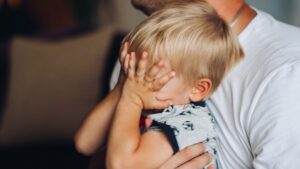
Signs of post-traumatic stress disorder (PTSD) are present in 44% of Ukrainian children.
Such data of the study of children’s well-being in Ukraine “Index of the Future” conducted by the Kyiv School of Economics on the initiative of the Olena Zelenska Foundation and with the support of the United Nations Children’s Fund (UNICEF) in Ukraine are quoted by the Health Ministry on its website.
In addition, according to the study, the share of children vaccinated against diphtheria, tetanus and pertussis has decreased by 16% since the beginning of the full-scale invasion, the share of children vaccinated against polio has decreased by 22%.
According to the study, the current vaccination rate against diphtheria, tetanus and pertussis in Ukraine in 2023 is 37% lower than in EU countries.
In addition, according to the study, 13% of children aged 14-17 systematically (at least once a week) drink alcohol and 16% smoke cigarettes. Moreover, boys resort to such risky behavior more often than girls. In addition, 56% of children have consumed alcohol at least once, 53% have tried smoking, and 3% have used drugs.
According to the survey, 71% of respondents consider themselves happy. At the same time, this assessment was more often given by children from the East of Ukraine and Kyiv most often said.
At the same time, 44% of children in Ukraine have signs of post-traumatic stress disorder (PTSD).
The study was based on data from five sources: government and open sources, quantitative studies of children, interviews with experts and graduates and alumni of institutional care.
The study included a representative online survey with 1,313 respondents aged 0-17 across Ukraine, excluding temporarily occupied territories.
Earlier, the Kiev-based think tank Experts Club announced the launch of a project on psychological recovery of people with the help of art therapy. Read more about the project here – https://open4business.com.ua/ru/stolichnyj-uchebnyj-czentr-experts-club-vmeste-s-art-gallery-universe-otkryl-programmu-art-terapii-dlya-postradavshih-ot-ptsr/
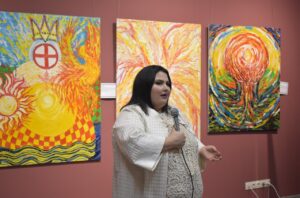
In Kyiv, the Experts Club training center in collaboration with Art Gallery Universe has launched a unique art therapy program aimed at helping people suffering from post-traumatic stress disorder (PTSD). As part of this initiative, an exhibition titled “Restoring Life: Art and Rehabilitation Project” was organized, where prominent Ukrainian artists such as Igor Moshkov and E-Ludmyla Svitla presented their works reflecting their personal experience of struggling with and rethinking the emotional states caused by PTSD.
Maksim Urakin, the initiator of Experts Club, emphasized the importance of the exhibition as an art therapy method for the correction of stressful conditions, including PTSD, especially in the context of the current challenges faced by many Ukrainians.
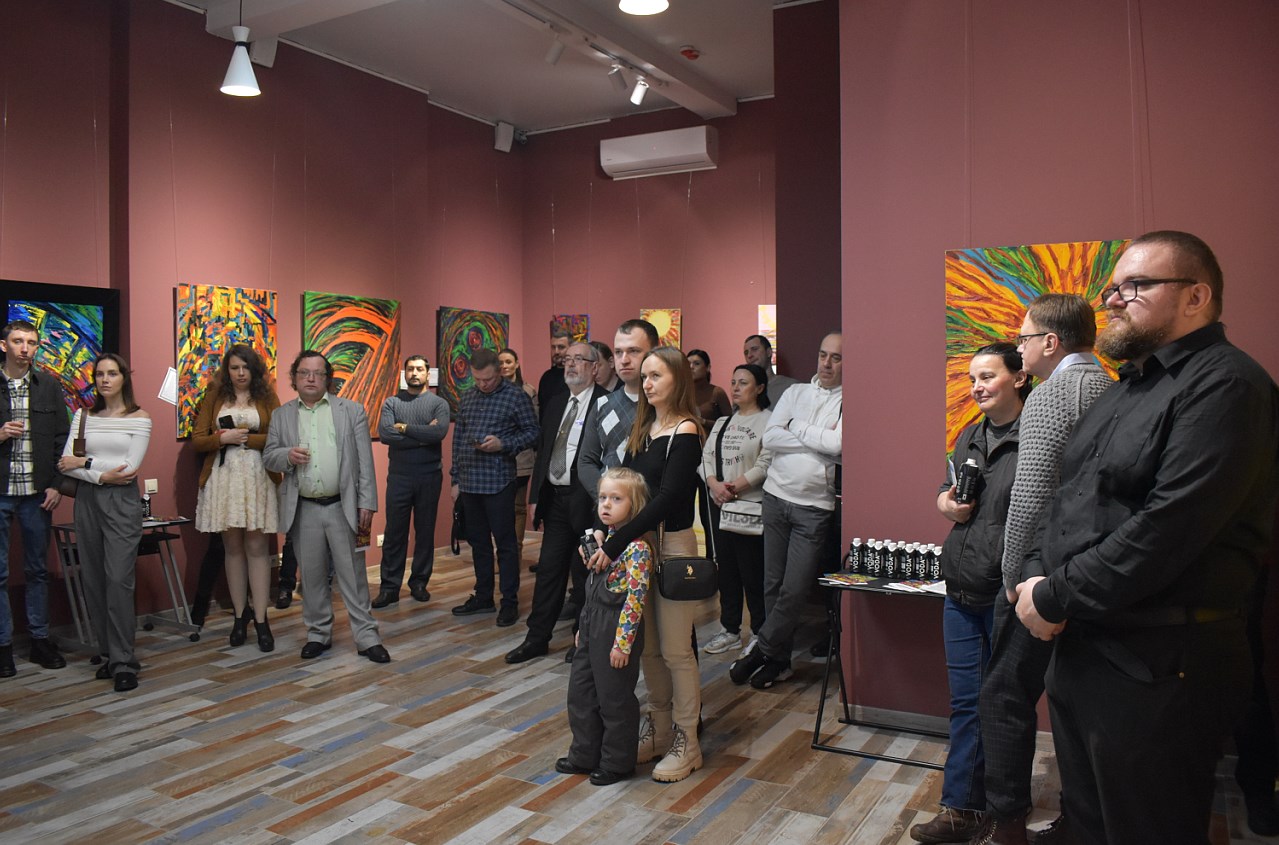
“This exhibition is more than art. It is an opportunity for visitors to experience healing and hope through painting, because the psycho-emotional state of many Ukrainians now needs support in the context of war and constant exposure to traumatic factors,” he said.
Lyudmyla Svitla, founder of Art Gallery Universe, shared her goal to encourage self-discovery and self-expression through art, considering it the key to inner peace.
Visitors of the exhibition shared their impressions, noting the deep emotional perception and personal meaning of each art object. The Restoring Life project highlights art not just as a means of aesthetic pleasure, but as an effective tool for spiritual healing and stress management.
Art therapy plays an important role in the treatment of PTSD and other stress-related disorders, as it allows individuals to express their feelings and experiences through art, which is often inaccessible through words. This form of psychotherapy helps reduce anxiety and stress, improves mood, and promotes emotional recovery. The inclusion of art therapy in rehabilitation programs for people with PTSD and other stress-related disorders can significantly increase their effectiveness by providing a unique approach to treatment and self-expression.

A veteran commits suicide every 65 minutes in America. One of the key reasons is PTSD. What will happen to Ukrainian veterans, and whether we will face similar disappointing statistics, depends on the ability to identify PTSD and its treatment. Viktor Dosenko, professor at the Bogomolets Institute of Physiology, head of the development and innovation department at CSD LAB medical laboratory, pathophysiologist, MD, told Interfax-Ukraine about the peculiarities of diagnosis, course and prospects for treatment of PTSD.
Text: Anna Levchenko
– Currently, Ukraine is just beginning to study the issue of PTSD. How relevant is this problem for Ukraine? When will we face the manifestations of PTSD, when will its impact be visible?
– Both extremes – that everyone has PTSD, or that there is no PTSD – certainly do not correspond to the real state of affairs, do not correspond to scientific data, and have negative consequences. How should the scientific and medical community approach this issue? In a balanced, logical, scientific way: Not everyone will have PTSD, of course, and not everyone has it, not even half of the population. Many military men do not have any PTSD. But at the same time, the number of people with PTSD in Ukraine is quite large – unfortunately, we do not have a register of patients with this pathology, so there are no exact figures.
To detect PTSD in a person, there is a screening. In particular, CSD LAB has taken a serious interest in this problem and has a separate section on the medical laboratory’s website where anyone can take a screening test for PTSD. Because in order to treat, you need to identify the patients. The task of finding such people is not an easy one. No one will come to the hospital and say: “I have PTSD, treat me”. A person may not know about his or her condition.
I want to note that the world celebrates the International PTSD Screening Day every year. Currently, the problem of diagnosis is relevant all over the world, because it occurs not only in countries where there are hostilities. Many other factors can also lead to the development of this serious mental illness. The earlier we detect this disease, the better and more effective the therapy will be. Therefore, screening programs to detect PTSD are currently being practiced around the world. In particular, experts from the US National Center for PTSD Research have developed the so-called five questions of perception. If a person gives a positive answer to at least three of them, this does not mean that he or she has PTSD, but it does mean that he or she needs to see a specialist.
– Can we say that PTSD is a mental illness, or is it just a situational problem of a spoiled mood?
– It is a mental illness. In the international classification of diseases, it is classified as a mental health disorder. The diagnosis of PTSD is made by a psychiatrist.
– But in practice, as psychiatrists say, a person with mental health problems usually believes that everything is fine, it’s just that the world around them is different. How do you get a person to pay attention to their condition and start treatment?
– A person needs to take a test and answer these five questions of perception. Our task now is to bring this information to the public. This is a free, evidence-based and very accurate way of screening. Not diagnosis, but screening, which, if necessary, will refer a person to a specialist for treatment.
PTSD is a serious problem. According to statistics from the U.S. Department of Veterans Affairs, a veteran commits suicide every 65 minutes in America. Healthy men who have returned from serving in the U.S. military, with all the support programs and rehabilitation centers, face this problem. We are not saying that all veterans in the United States have PTSD and are suicidal, but if we compare veterans with other men, the presence of PTSD increases the likelihood of suicide six times. For women, this figure is even higher. This is terrible data and, unfortunately, there is no reason to think that it will be any different in Ukraine.
– When, according to your forecasts, can we expect, say, a surge in cases or symptoms of PTSD? Should we expect this now, or will it take some time after the war?
– Most likely, we should expect a surge after returning from the war. A significant number of soldiers may already have PTSD, but unfortunately, we don’t have statistics. Actually, this data is not collected, there are no statistics on mental illnesses. We do not know how many people we have with PTSD and what the dynamics are. To understand the picture, veterans must undergo diagnostics and, if necessary, rehabilitation. But most veterans do not have this opportunity. After defeating the enemy, most of them will return to normal life. And it is then that we can expect this disease to manifest itself and there will be an avalanche-like increase in the number of diagnoses of PTSD. Because now PTSD exists, but there is no screening. Or it is not effective enough.
– What is the root cause of PTSD?
– There are two factors that trigger the development of PTSD. The first is direct contact with death. Not on television, not in photos, not in telegram channels, but direct, visual contact with death. A person sees death, and it strikes at what is called the core of the personality, at their own beliefs about what is good and what is evil. The second factor that can trigger PTSD is indirect contact with death, even without contact. These are two established factors. Everything else is a risk factor that increases the probability. That is, a person with existing mental illness is more likely to have PTSD. People who have used or are using drugs have a higher probability. People who have weak social support, no family, no children, or a traumatic personal life are more likely to have PTSD. Of course, there is also a genetic predisposition. But these are not causes, they are factors that increase the probability.
– How does PTSD differ from other reactions to a stressful situation?
– The fact that this horror of contact with death stays in the brain, in the psyche. It does not leave a person, and they keep returning to the traumatic situation. This event already exists exclusively in memories, it is detached from life, it has nothing to do with the current situation, but it is imprinted in the psyche and begins to dominate consciousness. The situation that caused PTSD has already happened, it does not repeat itself, and the person is still in it. This makes PTSD very different from other diseases, including chronic stress.
PTSD leads to hormonal disruptions. To a certain extent, PTSD is a neurohumoral disease. When the hormonal background changes, when stress is “lame” by one hormone. What this means is that under stress, the level of both adrenaline and cortisol in the blood should increase. But in PTSD, only the level of adrenaline rises, and cortisol is even lower than in healthy people. It’s like stress, but inferior – adrenaline dominates, and there is no cortisol, which should provide negative feedback and stop the stress response.
– And how does this threaten the human body?
– This is fraught with the fact that the body does not receive communication. Cortisol is supposed to come to the brain after stress and trigger recovery mechanisms. But there is no cortisol, the brain believes that the order to mobilize has not been fulfilled, so it gives commands to produce adrenaline and a stress response again and again. This exhausts the body. In medicine, this is called a “vicious circle,” from which the psyche cannot break free on its own.
– If we’re talking about hormones, hormonal levels, are there any tests, such as blood tests, that would allow us to detect the presence of PTSD as a chemical reaction of the body?
– We are on the way to this. We are currently working on this task together with the specialists of the Lisova Halyana psycho-rehabilitation center. We are trying to find the best solution, because the existing solutions are very expensive, and screening should be cheap.
– What does “expensive solution” mean?
– It takes a lot of money to identify people with PTSD. And this is a problem. Because screening means a cheap test that can be done to millions of people: all military personnel, all military families. But when the cost of the test is significant, it significantly complicates the ability to fight PTSD.
– How much is significant?
– According to our calculations, it was about 5 thousand UAH for one test. Therefore, if we talk about determining PTSD “by a drop of blood,” the methodological basis already exists, but there is a nuance – screening should be affordable. The whole world is looking for opportunities to conduct such screenings, but nowhere in the world have PTSD biomarkers been introduced. CSD LAB has developed them, but we hope to find a solution to reduce their cost. On the way to this solution, we have already introduced a test for biomarkers of chronic stress. This is no less dangerous pathology, which is certainly related to the war. Not everyone has contact with death, but the war introduces a state of uncertainty. This is what is happening now: news, traumatic information and sympathy trigger the so-called chronic stress. This is very well known in medicine. And all a person needs to do is take a test and see a psychotherapist, who will prescribe medication if necessary.
But I emphasize that chronic stress and PTSD are different things.
– Are there any medications being developed for PTSD?
– Currently, there are only two antidepressants that have been proven to work and improve the condition. Other drugs are being studied. There are quite a few of them, so we expect that new drugs will appear and be researched. In particular, medicines based on medical cannabis and psychotropic drugs. But, unfortunately, Ukraine is currently outside of these studies not only because of the war, but also because it is forbidden to study these drugs in Ukraine.
However, there is currently a demand for such research in Ukraine and around the world. There are international organizations that are ready to collaborate with Ukrainian experts and institutions to study these issues. For example, we are preparing a number of applications for participation in international research and hope that these studies will eventually begin. This, in my opinion, is a very good solution, because instead of standing with our hand out and asking for money, we will be able to develop it ourselves.
– Once upon a time, young Ukrainians were forced to take part in wars waged by the former Soviet Union, particularly in Afghanistan. Now these people are about 50-55 years old, they are a fairly active category of citizens, but they have a complicated history. We’ve seen many stories of guys returning from Afghanistan with crippled lives, crippled psyches, and not all of them were able to adapt to peaceful life. Are there any studies conducted among Afghanistan veterans?
– In the USSR and in all post-Soviet countries, unfortunately, this diagnosis was ignored. In Ukraine, there used to be no legal definition of PTSD. In this aspect, the question was not raised at all. That is, if a person had the consequences of a military injury or contusion, they could be offered treatment and rehabilitation in a sanatorium, and restored in neurological terms. Psychiatry and psychological assistance were out of the question. Currently, we also do not see work with those who may have suffered from PTSD 30 years ago. Only now have we begun to pay attention to these people. The first diagnoses of PTSD appeared in America in the 80s of the last century, and for quite a long time in other countries, even in Europe, it was believed that it was not a disease. That is, it took decades for PTSD to be accepted. Now it is necessary to develop diagnostic criteria and to communicate these criteria to doctors.
– Can PTSD be cured, or is it a chronic disease that stays with a person for life?
– PTSD is treatable, of course! In half of the cases, it will go away on its own. But this information is dangerous, because people will think that they don’t need to see a doctor, they say, PTSD will go away on its own. This is a mistake! You need to see a doctor to treat PTSD. In half of the people, PTSD can go away on its own, and in half of them it will not. And no one knows which half a person belongs to. PTSD is perfectly treated with psychotherapy, of course, if you start in time and if there are qualified specialists. In some cases, pharmacotherapy is required. Experts around the world are looking for new techniques, new drugs, new approaches to the treatment of this complex, dangerous disease. I hope that Ukrainian scientists will successfully join this research and together we will find effective methods of screening, diagnosing and treating PTSD.
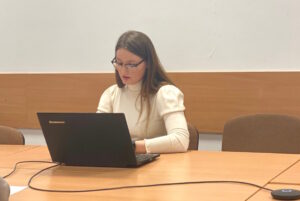
In March, the University of Łódź hosted an international scientific conference “Between the Reality of War and the Rhetoric of Peace”. The event was held under the patronage of the Voivode of Lodz and the Rector of the University of Lodz. This conference is a part of the Polish-Ukrainian art project aimed at popularizing the works of war artists, holding exhibitions of their works abroad, and publishing books about them as a way of their adaptation in peaceful life after the victory and overcoming the consequences of PTSD.
Aneta Pavlovska, Deputy Dean of the Faculty of Philosophy and History of the University of Lodz, Doctor of Science, Professor, who chaired the conference, emphasized the relevance of the project and spoke about the first such experience, the organization of 7 exhibitions of photographs by Captain Serhiy Belinsky, a press officer of the 28th separate mechanized brigade named after the Knights of the Winter Campaign, a famous musician and art photographer. Two catalogs of his works were published, scientific articles were written, and a monograph on Serhiy’s work in peacetime and wartime is currently being published at the Institute of Art History of the University of Lodz.

The following report was made by Yulia Ivashko, Doctor of Architecture, Professor at the Kyiv National University of Construction and Architecture, and press officer Serhiy Belinsky by phone from the Bakhmut direction.
The reports by Anastasia Urakina, a graduate student at the Kyiv National University of Construction and Architecture, and Agnieszka Gralinskey-Toborek, a doctoral student and professor at the University of Lodz, were directly related to the events of the war in Ukraine.
Anastasia Urakina presented a program of psychological rehabilitation and art therapy for people affected by the war, developed jointly with the Kyiv think tank “Experts Club“. The program primarily involves group work, which will be led by professional psychologists. Classes will be held at the “Experts Club“.
Anastasia Urakina’s theses on art therapy methods were a continuation of Ms. Agnieszka Gralinskay-Toborek’s discussion on which works of war survivors can be exhibited without harming the person, and which are only part of PTSD treatment.
It is worth noting that for the first time, Polish scholars had the opportunity to ask a Ukrainian artist at war questions live. Aneta Pavlovska asked how it is possible to remain an artist in the face of danger even in war. Serhiy answered that he has been in the army since 2021, he is used to it, his camera is always with him, and it is no less important for him than an information war with the enemy.
Yulia Ivashko showed a presentation of Serhii’s photographs and spoke about future plans to expand the circle of artists at war. The same point was emphasized by the Director of the Institute of Art History, Doctor of Science, Professor Piotr Gryglewski.
There were 18 presentations aimed at highlighting the work of military artists who experienced their own experiences, and the topic of war in art was also covered. Lukasz Sadowski, PhD, from the W. Strzemiński Academy of Arts in Lodz, highlighted the evolution of propaganda in Russian military painting.

Justyna Kobylarczyk and Dominika Kusznierz-Krupa, PhDs, professors at the T. Klczyuszko University of Technology in Krakow, who organized an exhibition Old-New Town at their university, showing Ukrainian cities before and during the war, said that such projects are needed.
Andriy Dmytrenko, PhD in Engineering, Associate Professor of National University “Yuri Kondratyuk Poltava Polytechnic”, highlighted the evolution of artistic messages during the war in Ukraine.
The conference ended with the presentation of the book “And the Light in the Darkness Shines” by Serhiy Belinsky and Yulia Ivashko about the war in Ukraine, published by the Krakow-based Impuls Publishing House.
ANASTASIA_URAKINA, ART, ART THERAPY, CLUB_OF_EXPERTS, CONFERENCE, KNUBA, LODZ_UNIVERSITY, PTSD, SERHIY_BELINSKY, YULIA_IVASHKO, АНЕТА_ПАВЛОВСЬКА
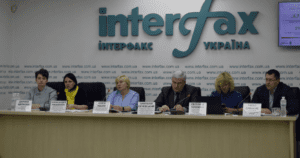
The phase of the psychological mobilization of Ukrainians caused by the war continues, the subjective assessment of the psychological state is quite high, according to the results of a study organized by the Mindi Charitable Foundation.
This conclusion was made by the authors of the study “The psychological state of the population of Ukraine in conditions of a full-scale war”, conducted by Kantar Ukraine, said Svetlana Chunikhina, deputy director of the Institute of Social and Political Psychology of the NAPS of Ukraine, at a press conference at the Interfax-Ukraine agency.
At the same time, it is specified that the research methodology was developed by the Institute of Social and Political Psychology, and UAF Coin provided financial support.
“Despite the circumstances of the war, the subjective assessment of the psychological well-being of Ukrainians is quite high – 6.7 points out of 9 possible. This is typical for all demographic groups and regions, but the subjective assessment of psychological well-being among internally displaced persons who continue to be evacuated is lower than among those who have not been displaced or have already returned home,” the deputy director said.
At the same time, according to Chunikhina, “resources for further support of psychological mobilization in society may not be enough.”
She noted that, according to the study, 40% of the respondents were threatened with their own lives and / or were direct witnesses of such threats in connection with their stay in the war zone and / or under shelling. More than 41% of citizens have relatives or loved ones who were or are in the combat zone, including 16% who have lost someone close to them.
“6% of respondents were under occupation, were subjected to a direct threat of violence or witnessed such threats. Every twentieth respondent (5%) was subjected to hypercumulative traumatization – that is, he experienced or witnessed all of the indicated types of traumatic events: shelling, threats to the lives of loved ones, occupation or captivity “, said the expert.
In addition, the study showed that more than 90% of respondents had manifestations of at least one of the symptoms of post-traumatic stress disorder, and 57% of citizens are at risk of developing PTSD.
Chunikhina noted that “despite the subjective optimistic assessment of her own condition, objective indicators cause concern.”
Thus, during the last month, only 3% of respondents received psychological assistance, and another 23% would like to see a psychologist, but have not yet realized this desire.
At the same time, according to Chunikhina, barriers to obtaining psychological support for Ukrainians are, in particular, the habit of not seeking psychological help, as well as financial barriers.
“The financial barrier is not a surprise. A third of respondents believe that psychological assistance is expensive. About 30% of respondents are ready to receive it only on a gratuitous basis,” she said.
In turn, Oleksandra Mashkevich, Director General of the Medical Services Directorate of the Ministry of Health of Ukraine, said that, according to the calculations of the Ministry of Health, in the post-war period, more than 15.7 million Ukrainians will face psychological problems, and 3.5 million people will need therapy and support from medical specialists. – psychiatrists, and about 800 thousand Ukrainians will need medical support.
She also indicated that the Ministry of Health will use the data obtained during the study to design and develop a psychological support program.
“We are conducting an in-depth audit of the system at the Ministry of Health – how many specialists in psychological care we have, these are both psychiatrists and psychologists. We conduct an audit on the methods by which psychologists work in Ukraine in order to further standardize these methods,” she said. .
In addition, according to Mashkevich, the Ministry of Health is studying mechanisms for including psychological assistance in primary care services under the Medical Guarantee Program (PMG).